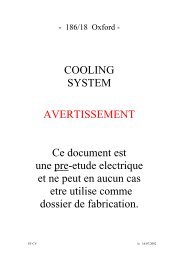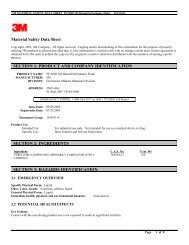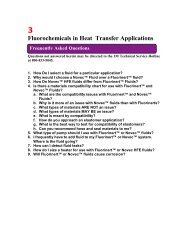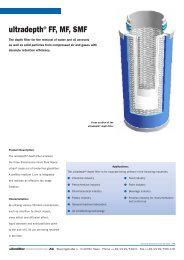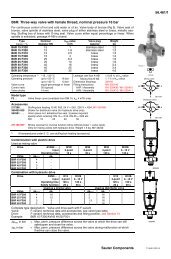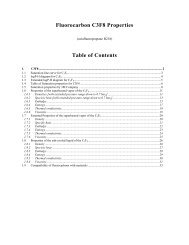OMRON Sysdrive 3G3HV - Detector Cooling Section
OMRON Sysdrive 3G3HV - Detector Cooling Section
OMRON Sysdrive 3G3HV - Detector Cooling Section
You also want an ePaper? Increase the reach of your titles
YUMPU automatically turns print PDFs into web optimized ePapers that Google loves.
Data<br />
display<br />
rh<br />
rr<br />
Description<br />
Braking resistor overheat<br />
(RH)<br />
The braking resistor protection<br />
function set with n079 worked.<br />
Control transistor overheat<br />
(RR)<br />
The control transistor<br />
protection function worked.<br />
%l1 Motor overload (OL1)<br />
The electronic thermal relay<br />
actuated the motor overload<br />
protection function.<br />
%l2 Inverter overload (OL2)<br />
The electronic thermal relay<br />
actuated the Inverter overload<br />
protection function.<br />
%l3*<br />
Overtorque (OL3)<br />
A current exceeding the value<br />
set with n075 flowed for more<br />
than the time set with n076.<br />
Cause and action<br />
Regenerative energy from the motor is excessive.<br />
→ Increase the deceleration time, connect a small load,<br />
or connect the Braking Resistor Unit to the Inverter.<br />
The voltage of power supply to the Inverter is too high.<br />
→ Lower the voltage within the rated power supply<br />
voltage.<br />
Regenerative energy from the motor is excessive.<br />
→ Increase the deceleration time, connect a small load,<br />
or use replace the Inverter with a model that has a<br />
capacity one rank or two ranks higher.<br />
The voltage of power supply to the Inverter is too high.<br />
Lower the voltage within the rated power supply voltage.<br />
The load is excessive or the acceleration time,<br />
deceleration time, and cycle time are too short.<br />
→ Review the load size, acceleration time, deceleration<br />
time, and cycle time.<br />
The voltage of the V/f characteristics is excessive.<br />
→ Review the V/f characteristics.<br />
The rated input current of the motor set with n032 is<br />
improper.<br />
→ Set n032 properly.<br />
The load size is excessive or the acceleration time,<br />
deceleration time, and cycle time are too short.<br />
→ Review the load size, acceleration time, deceleration<br />
time, and cycle time.<br />
The voltage of the V/f characteristics is excessive.<br />
→ Review the V/f characteristics.<br />
The capacity of the Inverter is too small.<br />
→ Replace the Inverter with a model that has a larger<br />
capacity.<br />
High carrier frequency. (400V-class models)<br />
→ Decrease the set value of n050.<br />
→ Check whether the n075 and n076 settings are<br />
appropriate.<br />
→ Check the machine use status and eliminate the<br />
cause of the problem.<br />
ef2 External error (Terminal S2) An external error is input.<br />
ef3 External error (Terminal S3) → Remove the cause of the external error.<br />
ef4 External error (Terminal S4)<br />
ef5 External error (Terminal S5)<br />
ef6 External error (Terminal S6)<br />
cpf0<br />
Digital Operator<br />
transmission error (CPF0)<br />
The Inverter could not<br />
communicate with the Digital<br />
Operator within 5 s after<br />
power is supplied to the<br />
Inverter.<br />
The Digital Operator is not connected to the Inverter<br />
properly.<br />
→ Reconnect the Digital Operator to the Inverter.<br />
The CPU of the Inverter is broken.<br />
→ Replace the Inverter.



